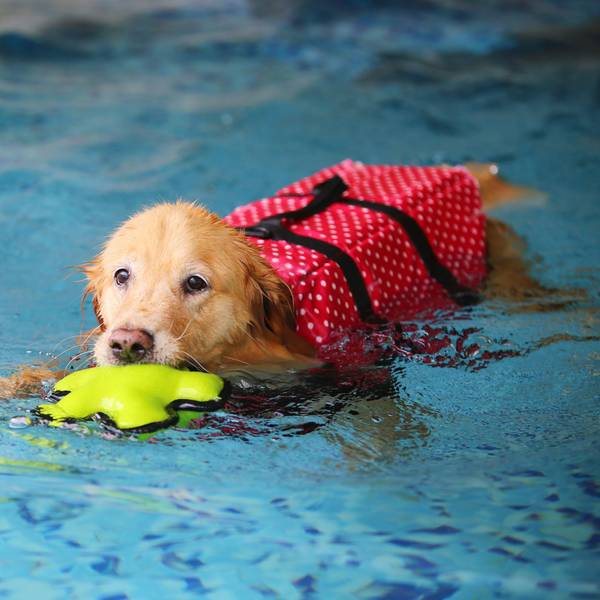Most people think all dogs can swim and are born with the natural ability to do so.
But the reality is that while most dogs instinctively make a paddling motion if they happen to wind up in water, it's often the extent of their ability to swim. Not every dog paddle is effective at keeping the animal afloat, and many dogs have no idea how to move forward (which is why you can sometimes see them going around in circles).
Medium-to-large sized breeds with water-resistant coats are typically strong swimmers. These dogs have been bred for water work and include most retrievers, including the lab, the golden and the Chesapeake Bay retriever. Many small dogs can be very good swimmers, but tire out very quickly so you mustn't let them over do it.
Teaching your dog to swim
Many dogs benefit from the use of a life jacket (one specifically made for dogs) while they get used to the water and learn how to use their paws to move forward and keep them afloat. Start off in shallow water and gradually increase the depth. Stay close and praise your dog, you can use a floating ball or toy to encourage you dog to go further out, but don't let them get too far away from you. Once they have built up some confidence and you are happy they can paddle and stay afloat, you can start to remove the life jacket.
If your dog is more confident and happy with their life jacket on, leave it that way!
It is suggested that if you are taking your dog out on a boat that they remain in their life jacket for the duration.
Remember, it's ok if they don't like to swim. It just means they can spend more time on the beach chasing the ball or watching you float around the pool.
If you are looking for a life jacket, it is best to bring your dog into your local Just For Pets store so they can be properly fitted.
If the jacket doesn't fit correctly, it will be uncomfortable and defeats the purpose of keeping your dog afloat and having fun'






